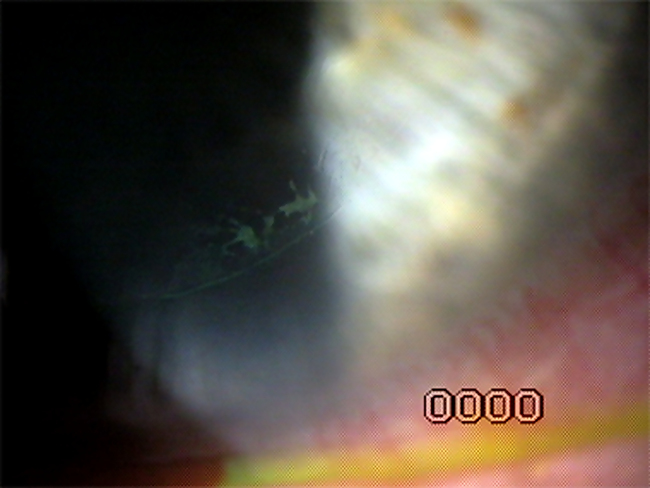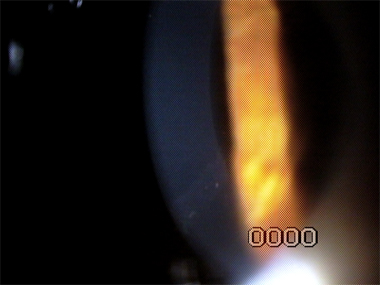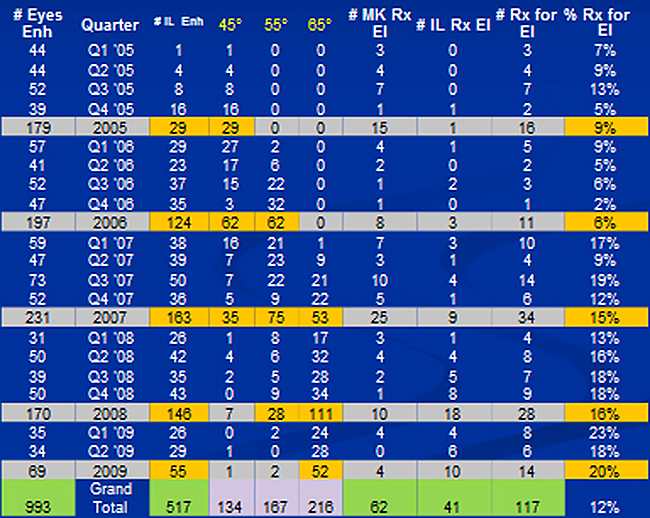Correlation of Clinically Significant Epithelial Ingrowth and Primary Side-Cut Architecture Following Lift Enhancement.
American Academy of Opthalmology Presentation
Correlation of EI Occurrence with Side Cut Architecture following LASIK lift enhancements

Correlation of Clinically Significant Epithelial Ingrowth and Primary Side-Cut Architecture Following Lift Enhancement.
Cory M. Lessner, M.D.
Millennium Laser Eye Centers
Sunrise, Florida
October 23, 2020

Background
- LASIK Slit Lamp Refinement for epithelial ingrowth (EI)
- Developed over the past 20 yrs
- Eliminates need to return to the laser suite for flap revisions in most cases

SL Removal of EI
- Patients with early EI almost always display accompanying linear or skip margin staining with fluorescein. +/- Foreign body sensation.
- Identification of EI often made by reverting to white light following the instillation of fluorescein and observing for stain under the flap, since epithelium soaks up dye like a wick.
- These techniques allow for simple well tolerated early SL intervention. See link on home page for most recent epithelial ingrowth removal videos.



Definitions & Abbreviations
- EI: Epithelial Ingrowth
- SL: Slit Lamp
- OR: Laser Room
Methods
- 2313 consecutive LASIK enhancements patients
- Between January 2004 and December 2017
- Records were evaluated for:
- Type of keratome and side-cut characteristics at time of 1
- +/- EI development and extent
- +/- EI removed
- Where removed (i.e. slit lamp vs. laser suite)
- +/- EI recurrence
- +/- Resultant ∆ flap edge architecture (i.e. erosion)

Methods
- 2041 eyes of 1476 patients were reviewed
- 803 Female; 673 Male; 0 Unspecified
- 565 bilateral; 911 unilateral eyes
- 1053 OD; 988 OS
- 741 Primary MK (Hansa, ACS, Moria) (36.3%)
- 1300 Primary FS (Intralase, FS200) (63.7%)
- 193 FS200 (14.8% of FS / 9.5% of total)
- 1107 Intralase (85.2% of FS / 54.2% of total)
Exclusion Criterion & Data
N=272 of 2313 (11.8%)
- Inadequate f/u, lost to f/u, chart not found – 54 eyes
- 2nd or more enhancement – 168 eyes
- Non lift enhancement (e.g. Striae, debris rinse) – 7
- Primary EI/Pt sent to MLEC for EIR – 19 eyes
- Enhancement constituted initial flap creation (e.g. PRK primary) – 16 eyes
- PRK enhancement of primary PRK – 5 eyes
- Enhancement of primary RK – 3 eyes
- Actual exclusion of lift enhanced eyes – 54 of 2095 (2.6%)


EI following lift enhance of MK 1∆ flaps

Side Cuts Angle
IL/FS Primary Treated for EI
N=1300
193 FS200; 1107 IL
On cursory examination, appears as if stepper side-cut angle has higher incidence of EI treated however, this increase is reflection of increased comfort with SL techniques used to remove EI at SL in cases that would have previously gone untreated.
Flap Edge Architectural Change
65 of 741 MK (8.8%) 87 of 1300 IL/FS (6.7%)
30 Treated for EI ; 35 Not 33 Treated for EI ; 34 Not
- Occurrence of mild to moderate architectural flap edge changes does not seem to be predicated on keratome type
- Edge changes were not apparently due to EI removal intervention
- None of 152 were visually significant and in most cases (135 of 152 = 88.9%) were minor (‹Grade 2).
Conclusions – MK vs. IL/FS created 1∆ Flaps
The incidence of EI following lift enhancements which requires treatment is about twice as likely to occur in eyes treated primarily with keratomes where side-cut architecture lacks stepped configuration created by IntraLase/Femtosecond.
Conclusions – MK vs. IL created 1∆ Flaps
-
- Some Recurrence of EI: MK 43.4% vs IL/FS 31.7%
- Required 2+ ReRx: MK 17.1% vs IL/FS 2.4%
-
- MK primary patients are much more likely (7x) to require more than 1 EI removal than IL primary patients.
-
- Required Rx in OR: MK 12/76 (16%) vs IL/FS 1/41 (2.4%)
Patients developing EI with 1∆ MK flap architecture are likely to develop more extensive EI necessitating removal in OR.
Conclusions – MK vs. IL created 1° Flaps
These finding have clinical implications for patients who are choosing a keratome technology for their primary procedure (e.g. IntraLase/Femtosecond vs. Ziemer/MK) and for those patients who are evaluating risk/benefit ratio of enhancement. Importance of post-enhance follow-up visits to monitor and Rx EI should be stressed and factored in (e.g. out of town pts) when considering lift enhancements on past patients
Conclusions
While many patients received early treatment of EI that would not have otherwise received intervention because these SL techniques were utilized (N=406 treated; 366 SL; 40 OR), use of these techniques allows for opening of the flap margin that is limited to the clock hours of EI present.